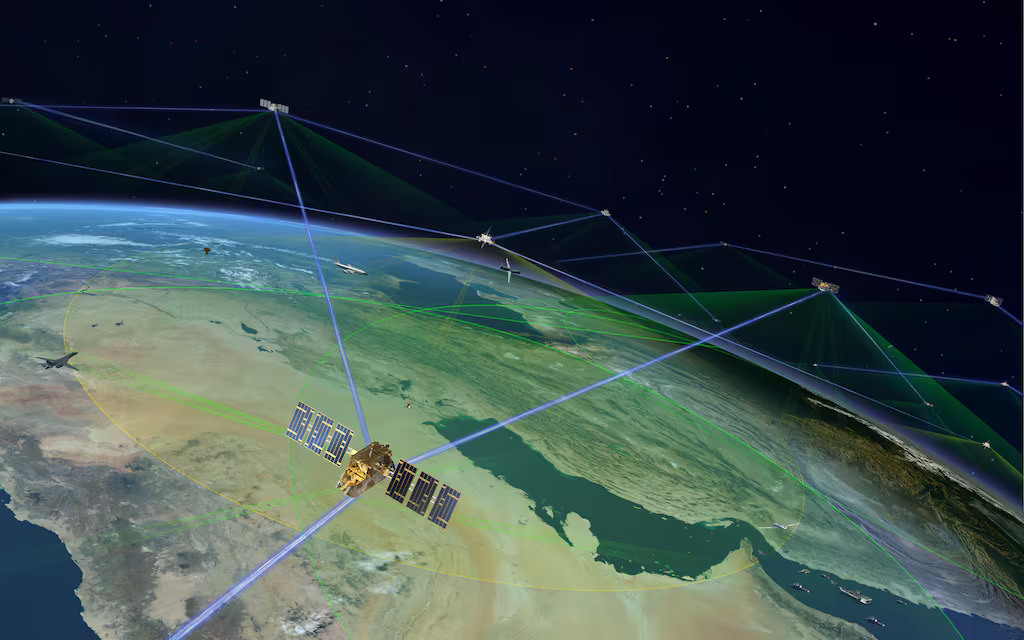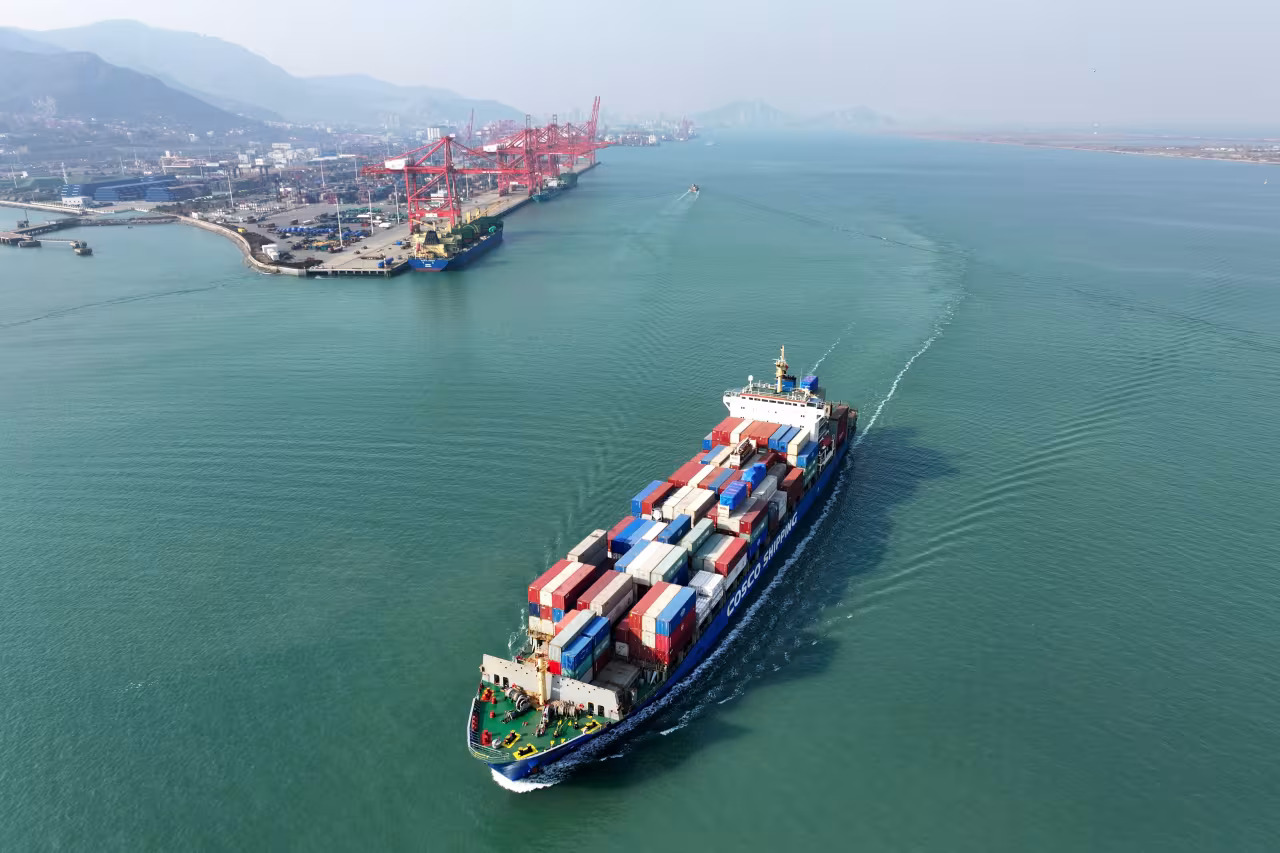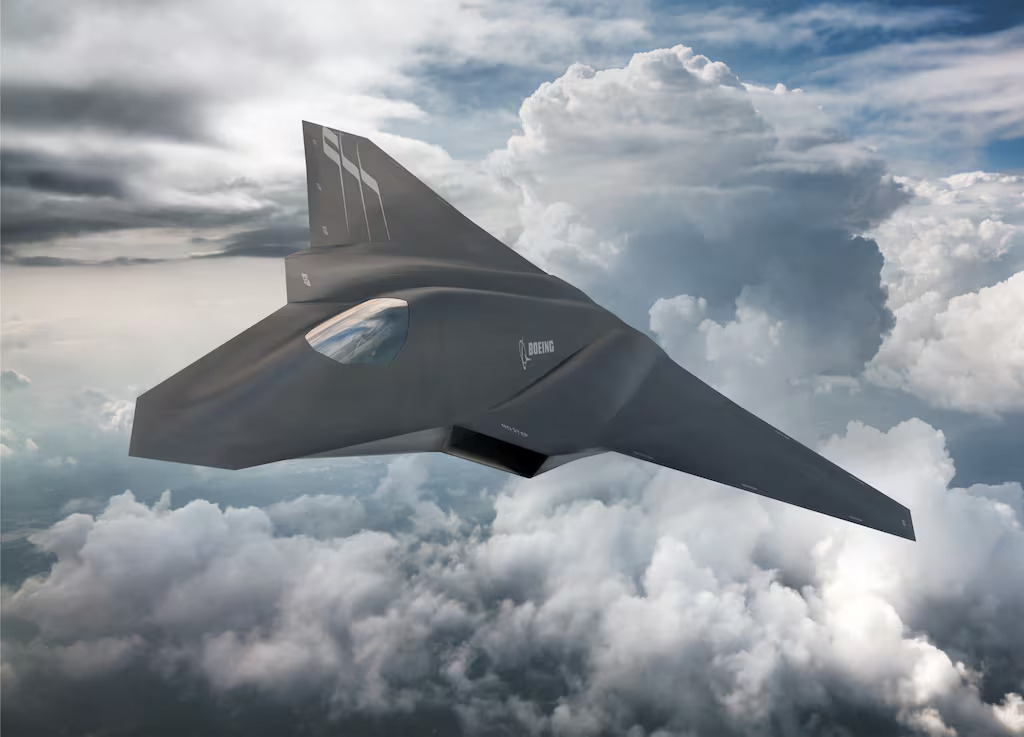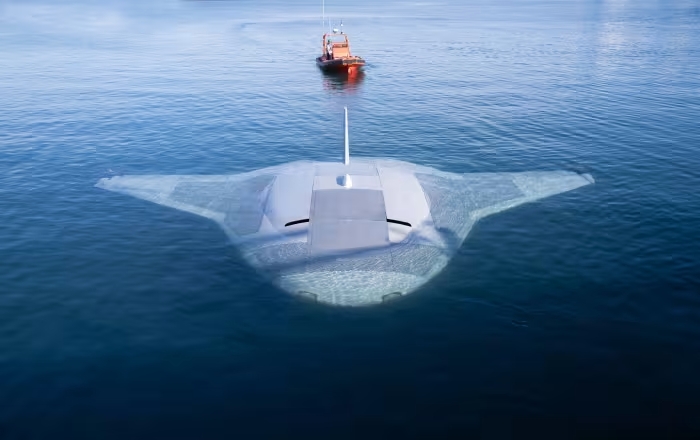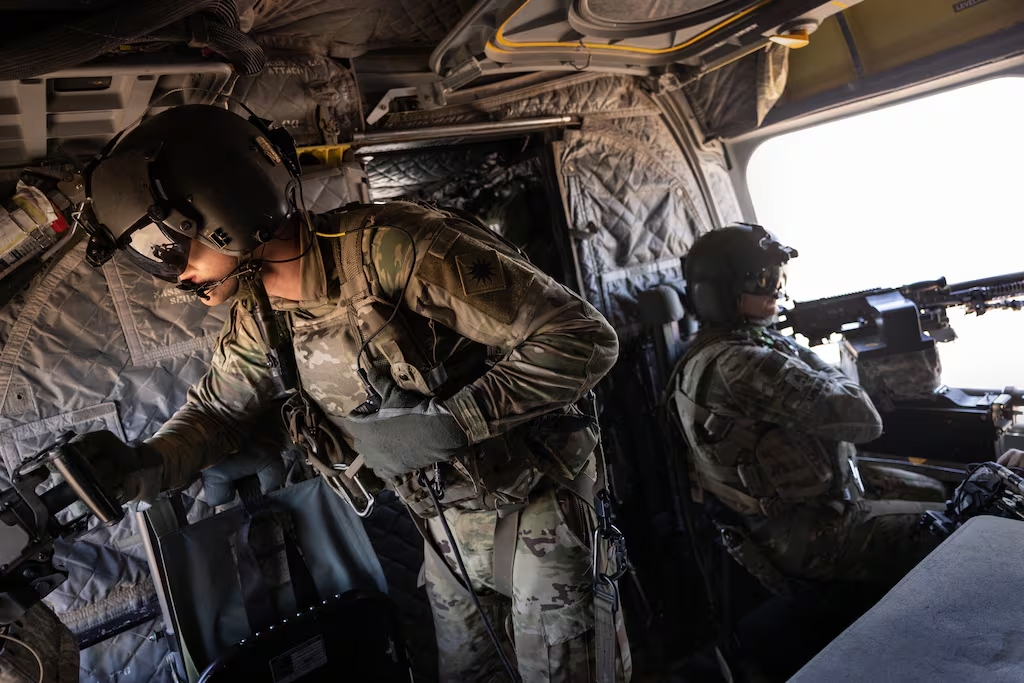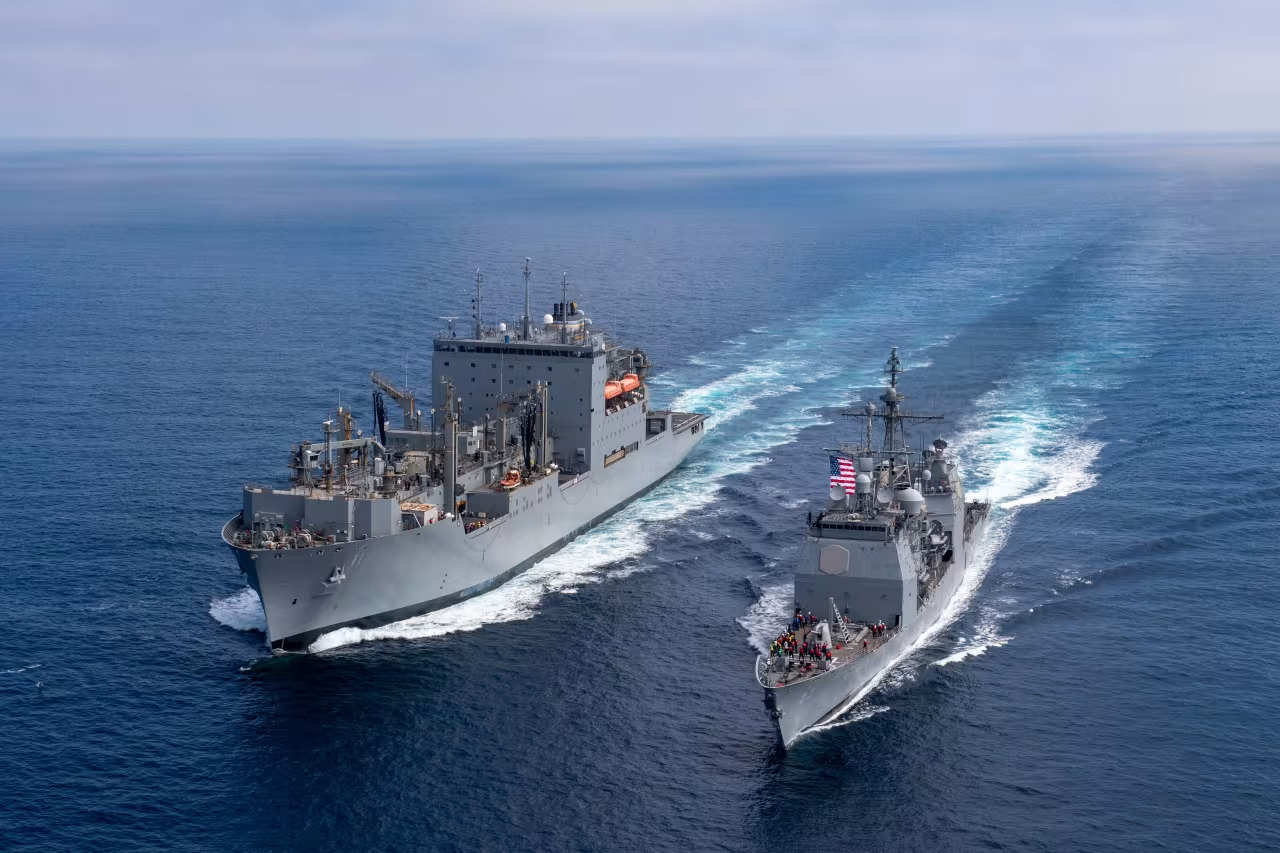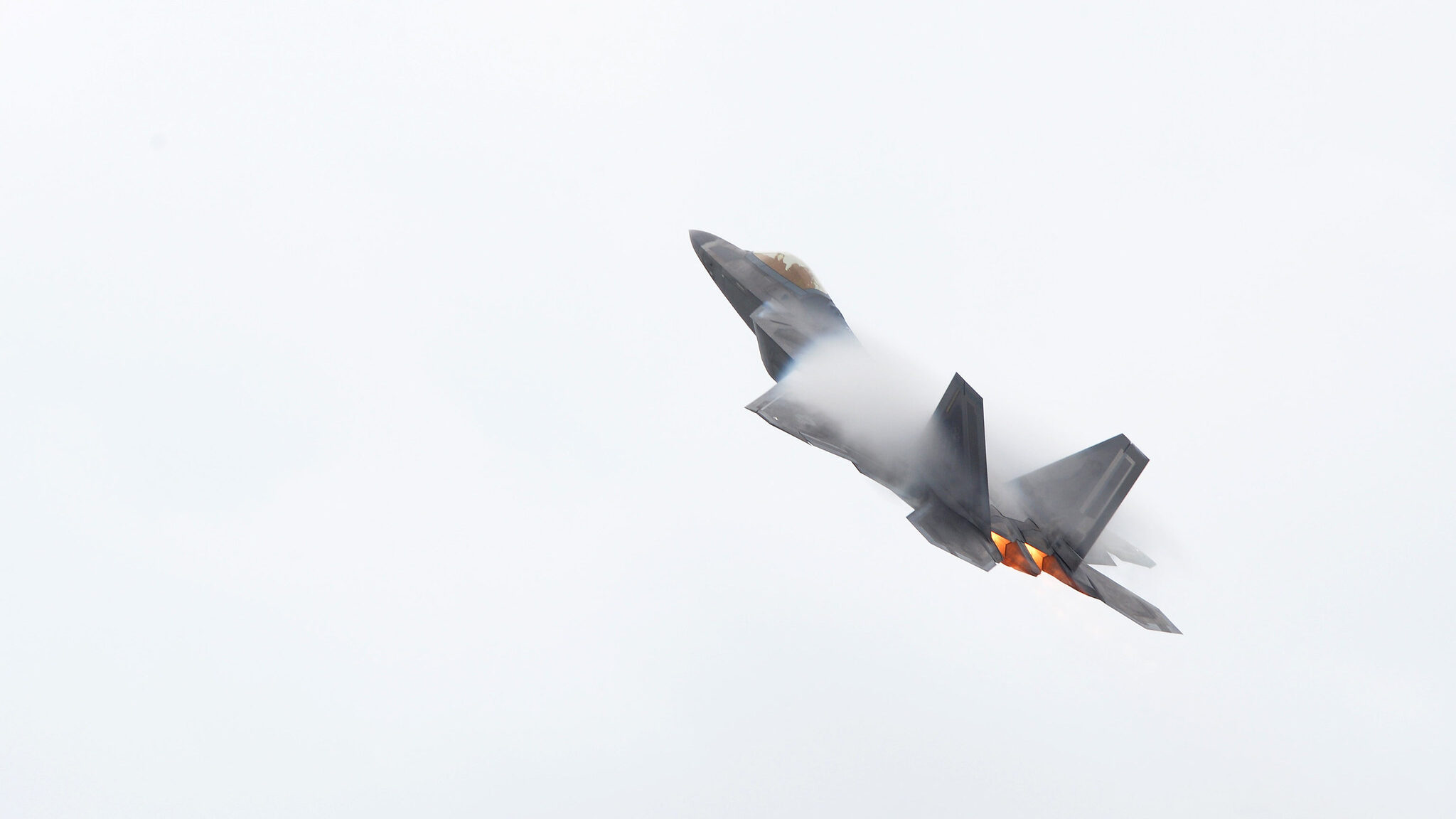York Space Systems and SpaceX, two companies building satellites for the Space Development Agency’s megaconstellation, recently demonstrated the ability to connect two of their on-orbit spacecraft through a laser link.
During the demonstration, York linked one of the communication satellites it built for the first iteration of SDA’s constellation with a SpaceX missile tracking satellite. The laser communication links the companies used allow the satellites to transmit information quickly and securely.

